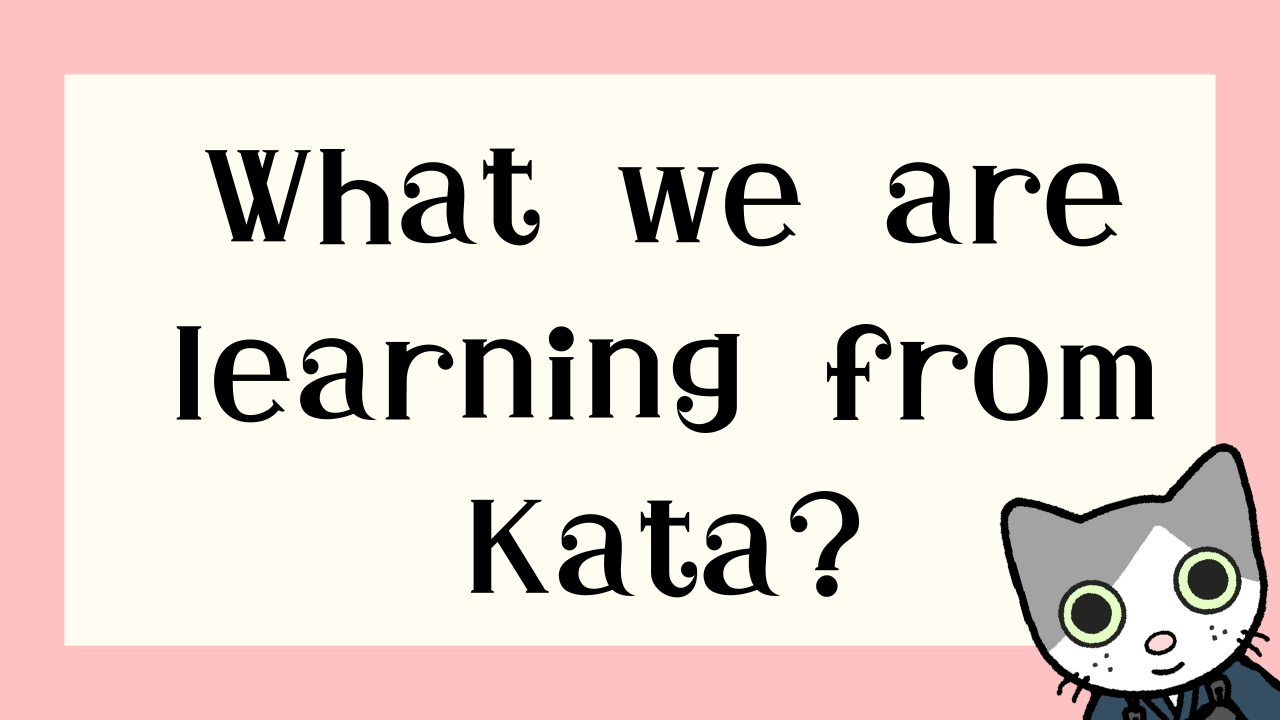It’s Tuesday, our kendo kata practice day.
As soon as we finished the opening greetings, Sensei asked us a question.
“If you were to teach kendo to a complete beginner who had never practiced shinai kendo or kendo kata, what would be the first thing you would introduce to them about kendo? You don’t have to answer right now, so please take some time to think about it.”

Think about it!

Hmm…
Just as I was about to start searching for an answer in my head in response to Sensei’s question, I heard somebody’s voice…
“Sorry I’m late…but may I come in?.”
Oh! The prospective student who came to observe last week showed up today.

Yay, yay♪
Welcome to our dojo, Ms. New Student💛
Huh?! But wait, wait, wait a minute…!
So, that means… maybe, just maybe…
Yes, that’s right.
Sure enough, after a while, Sensei said to me,
“Okay, so today, Kendo Cat, you’ll be teaching kata to Ms. New Student. You’ve taught kata before, right? Just teach it the same way you always do.”
So…, I had an assignment to teach kata to the beginner on their first day of practice.
Well, like anything, when you’re teaching something to other people, first, you need to understand it correctly yourself, right? I even still haven’t found the answer to the teacher’s question from earlier!
On top of that, I think it’s important to explain things in a logical and systematic way, while breaking it down so that the person you’re teaching can understand.
Especially with adult beginners…
Even if you have a wealth of correct information, if you just throw it randomly and from various angles at someone, the person on the receiving end will be left thinking,

What the heck is this?
and will become confused or, in some cases, be a panic mode.
So, depending on the time and place,
if the situation and time allow you, my ideal is to be as measured as possible, both when teaching and learning, and to deepen understanding by carefully organizing each piece of information one by one.
But, no matter what, the very first thing we need to understand before starting to learn is,
“Why am I learning this?”
Isn’t it important to understand what the goal of learning is?
If you try to simply memorize the steps of each kata like “Do this, then do that” without any understanding of its logic, it’s difficult to remember.
In the first place, why do I have to remember all these complicated steps?
These questions or doubts start to arise, and if you can’t find the answers, I think your motivation to learn will gradually decrease.
That’s how I felt when I first encountered kata, hahaha.
Seven tachi no kata and three kodachi no kata sandwiched between opening/closing tachiai.
By learning this series of “Nihon kendo kata,” which was left to us by senpai kenshis about 100 years ago,
I’ve been pondering anew what I’m trying to learn from kata, and how I should pass on what I’ve learned to future kenshis…
I’ve been thinking about this deeply and I ended up I was panting heavily, thinking that I need to organize my thoughts once again.

Everyday is shugyo…
Okay…
I will go to practice again tomorrow ♪


